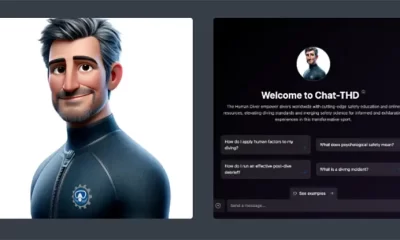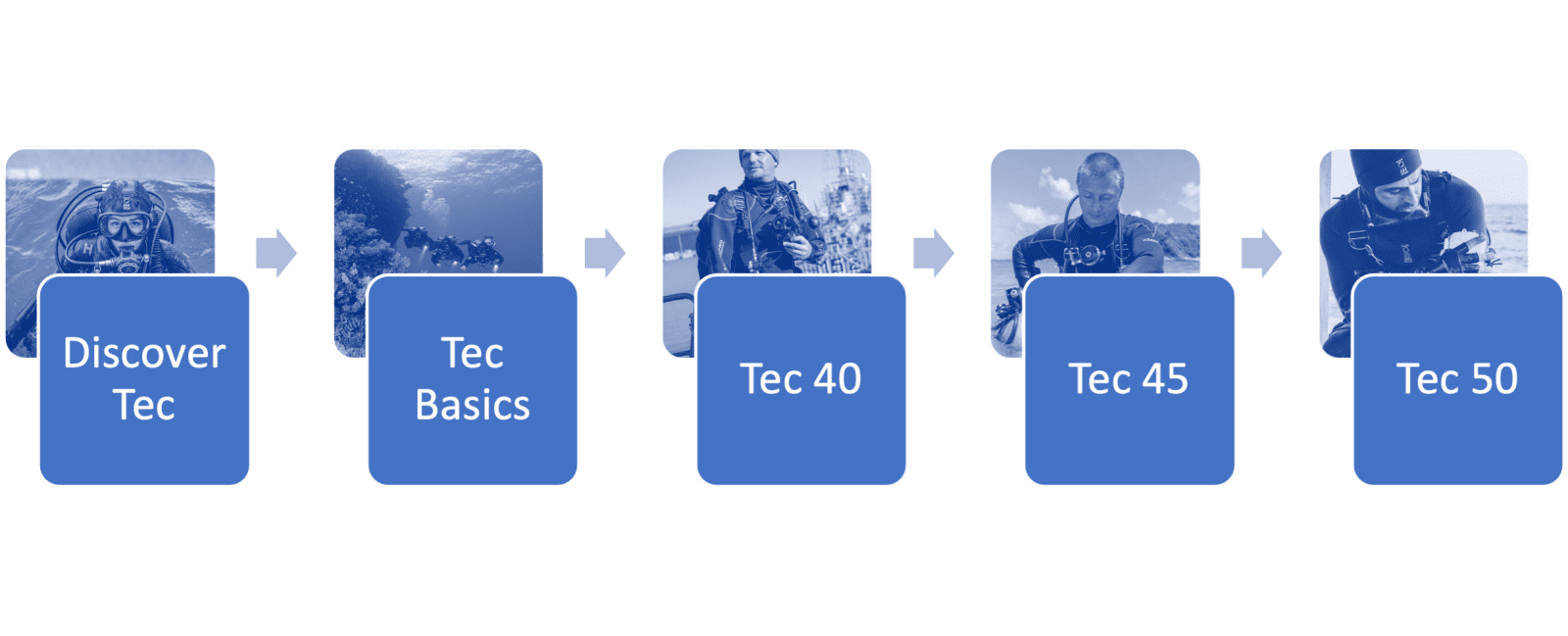
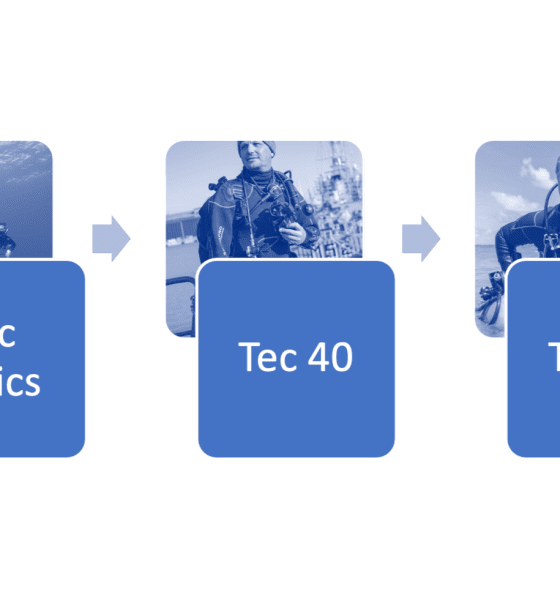
Education
The Way The World Will Learn to Tec: Exploring PADI’s TecRec Update
By Michael Menduno. The views and opinions expressed are strictly my own. Photos courtesy of PADI unless noted.
This October at the annual Diving Equipment & Marketing Association (DEMA) tradeshow, PADI released a long-awaited update to its open circuit “TecRec” program, which was originally launched in 2001. Specifically, the training juggernaut has completely rewritten its introductory courses to tech diving, i.e., its Tec 40, 45, and 50 courses that serve as the gateway between recreational and technical diving.
The update incorporates the latest diving science and thinking on topics such as gas density, gradient factors and deep stops, the helium penalty, whether oxygen is narcotic, dive planning software, and more. It enables divers to do their training in sidemount or backmount, adds additional “dry” practice session options into courses, and now offers trimix as a gas option beginning at 40 m/130 ft—originally the program was air and nitrox only.
In addition, PADI added a Discover Tec (try-dive) and Tec Basics (skills) courses as additional resources for would-be tekkies and instructors. PADI’s advanced trimix courses, Tec 65 and Tec Trimix (which are newer) and its closed circuit rebreather (CCR) program (which was launched in 2012) remain largely unchanged. The updated TecRec courses are available now, though the original courses can be taught until 2025.
“We think it’s the most robust and comprehensive program on the market,” PADI’s Michael Richardson, a Supervisor for Instructor Development, boldly asserted to me at the show. His comment got my attention, and I was interested to know more.
The TecRec update signals a conscious move on PADI’s part to lean forward into Tec diving and make it more accessible to interested recreational divers, while providing increased flexibility and resources for instructors and dive centers to expand their technical diving business. As discussed in PADI’s member materials, though tech divers only represent about 7% of recreational or sport divers, they are not only more engaged but spend considerably more money on equipment and training—as we know!—making them a lucrative market niche. “Tec diving is the future of the market,” opined Asutay Akbayir, PADI Regional Manager for the South Mediterranean, who has been involved in the TecRec program since its inception.
In fairness, though PADI is not regarded as tech brand, its sheer size and market presence with 128,000 members (instructors and dive masters), 6,600 dive centers in 184 countries, and (according to PADI) an estimated 70% of the open water market—The Way the World Learns to Dive—makes them an important player in the tech market.
Though they declined to answer me specifically, PADI likely has upwards of 4-5,000+ Tec and rebreather instructors at various levels (personal communications)—second only to Technical Diving International (TDI)—and sports at least 366 designated TecRec centers in 64 countries, though many more dive centers offer tech training. And though they also declined to answer my questions on certifications, PADI is probably responsible for having brought tens of thousands of new tekkies, well, in this case, “Teccies,” into the fold.
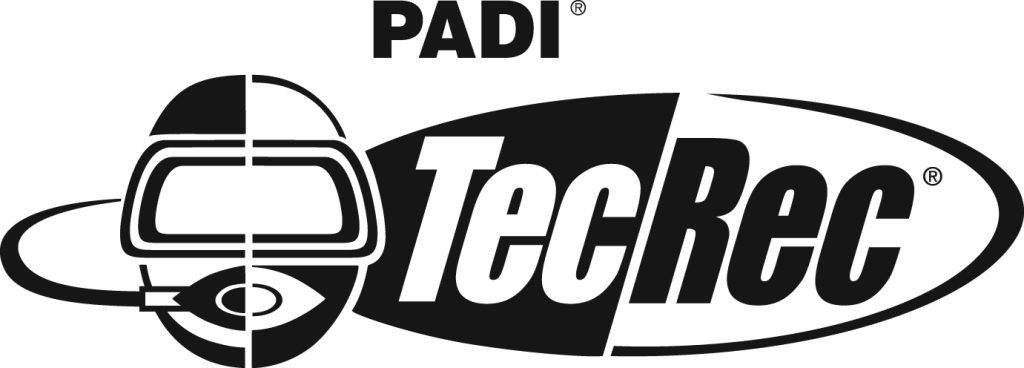
By focusing on the transition from Rec to Tec—arguably an area of strength for PADI which dominates the recreational market—the training giant will not only help create more tech divers but likely stands to grow the market—The Way Many Will learn to Tec? —and in doing so gain market share. They will also likely gain Tec instructors. According to PADI, 55% of all technical diving instructors globally are also PADI professionals, which means that the organization has direct links to those that can potentially help grow its tech training business.
PADI’s prospects for picking up new business are arguably further enhanced by the high quality of PADI’s new Tec eLearning materials and standards which seem to combine the best of old-school tech with the latest developments. Though some tekkies seem to enjoy PADI bashing—ironically both PADI and Global Underwater Explorers (GUE), which hosts InDEPTH, seem to be favorite targets for critics, though for different reasons—most tech professionals will likely be impressed by PADI’s latest efforts, which were more than two years in the making. I know I was.
Accordingly, here is a brief review of the history of PADI’s TecRec program and a discussion about some of the details of the new update.
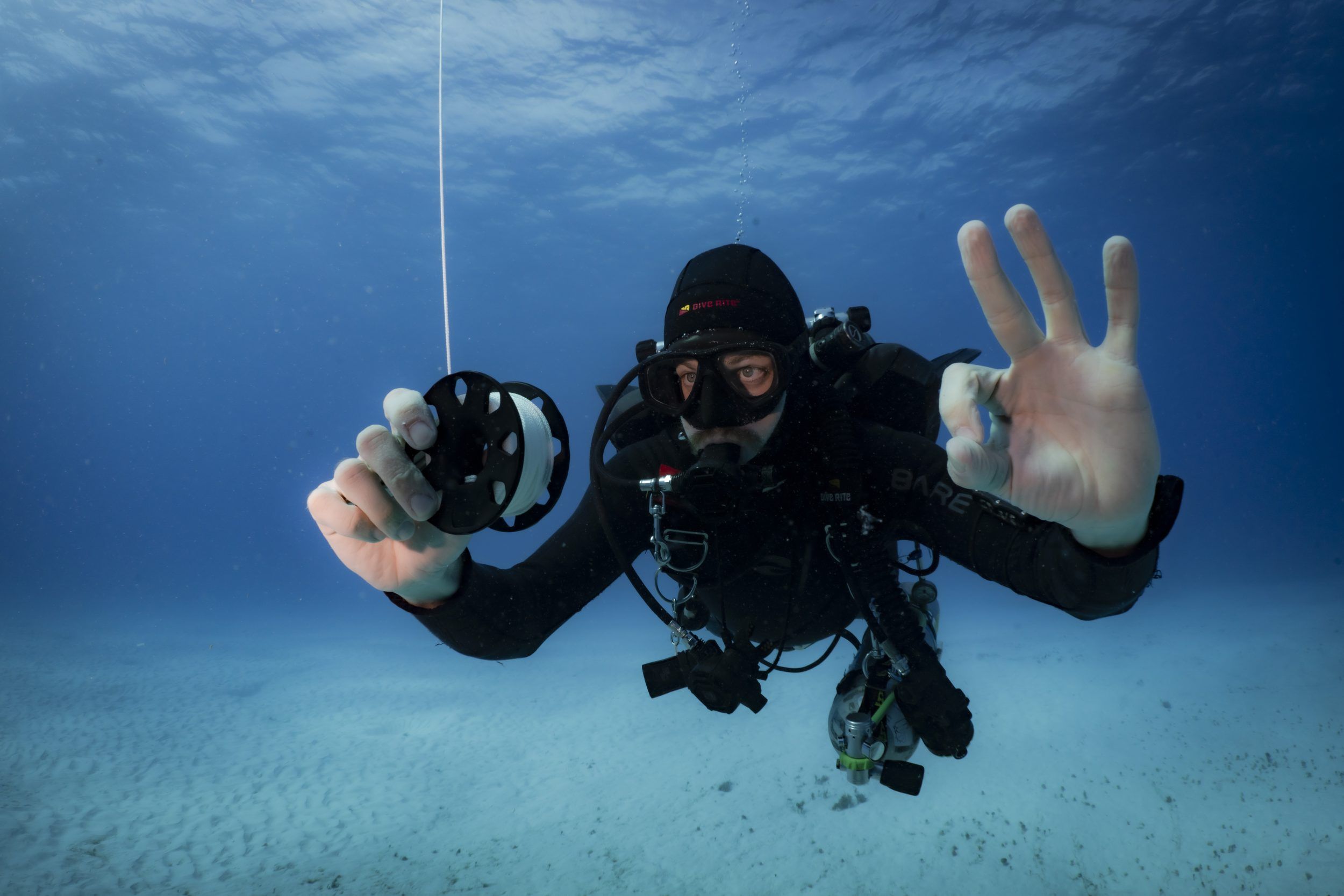
A Dive into Tec History
PADI’s Diving Science and Technology (DSAT) division released its Tec Deep Diver program in 2001. The general approach at the time was to treat technical diving like cave diving, in that it shouldn’t be promoted, but if people were interested, the training was available. Note that DSAT, which served as PADI’s tech division for a time, was also a sponsor of Rebreather Forum 2, held in Redondo Beach, CA in 1996, and published the Proceedings.
Tec Deep Diver was an extensive course, typically taught over an extended time, with numerous days and or weeks devoted to training. It included 12 air or nitrox dives to a max depth of 50 m/165 ft, and a dense 378-page manual. By comparison, an Intro to Cave followed by Full Cave course today, would generally run 8-10 days and include 16 dives. In about 2009, the Deep Diver course was broken up into three modules: Tec 40, Tec 45, and Tec 50, indicating maximum course depth in meters, but the content remained largely unchanged.
Instructors I asked told me that the Deep Diver course was challenging to teach. First, the time requirements meant it was very difficult to fit into student and instructor schedules. Breaking the course into modules helped some, but the sheer volume of content was daunting. The course was developed when mixed gas dive computers and dive planning software were still in their infancy, so students were left to deal with extensive math calculations with a pen and calculator.
The original course was also conducted solely on air or nitrox blend. In fairness, back in the day, the community, by and large, limited air diving to 57 m/187 ft, based on a PO2=1.4 bar, and considered narcotic levels manageable at those depths. It was only later, pioneered primarily by GUE, that the recommendation to maintain Equivalent Narcotic Depths (END) at 30 m/100 ft by adding helium to the mix.
As a result of the further work on gas density, Dr. Simon Mitchell and Gavin Anthony, concluded that air diving be limited to less than 40 m (gas density less than 6.3 g/l). To be sure, PADI received internal and external feedback and scrutiny over the last few years regarding their approach to what is now considered “deep air” diving, and deep air diving with students. They were not alone. Their new recommended trimix options address this.
Finally, the original course material became seriously out-of-date with regard to important new developments in diving science and safety, including gas density as mentioned, gradient factors and deep stops, narcosis levels, the helium penalty, whether oxygen is narcotic, Immersion Pulmonary Edema (IPE), using dive gauges and tables versus dive computers, the use of dive planning software, and more.
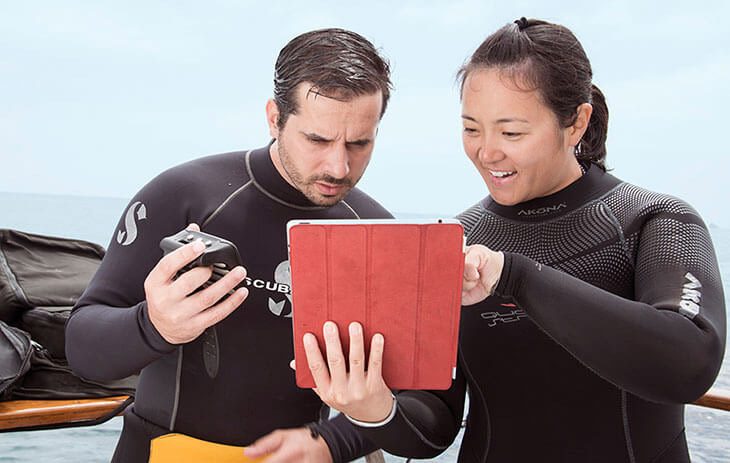
Course Structure and Logistics
As far as the requirements for the courses, Tec 40 requires a PADI Advanced Open Water and Enriched Air Diver certification (Rescue Diver is recommended), the Deep Diver certificate or at least 10 dives to 30 m/100 ft, and at least 30 logged dives. The student must be at least 18. Tec 45 requires Tec 40, an additional Rescue Diver certification, and a minimum of 50 dives (≥10 dives to at least 30 m/100 ft). Tec 50 requires Tec 45, and a minimum of 100 dives or 75 hours. No doubt, a discussion could be had on how much experience someone should have before starting on their tech journey.
Course specifications are as follows: Tec 40 can be conducted on a single tank provided it has a Y-valve for redundancy, or backmount or sidemount doubles, depending on the students’ certifications, along with up to one deco gas with a maximum of 50% oxygen. The course includes four dives to α max depth of 40 m/130 ft with a maximum of 10 minutes of decompression on back gas, or 15 minutes using deco gas. The course has a trimix option with a minimum of 21% O2 and a maximum of 35% helium.
Tec 45 is conducted in doubles back or side mounted cylinders and one deco gas up to 50% O2, with four dives to a maximum depth of 45 m/148 ft and a trimix option. There are no decompression time limitations. Tec 50 also consists of four dives to a maximum depth of 50 m/165 ft with double cylinders, two deco gases, one of which can contain up to 100% O2, and (optionally) normoxic trimix, with no more than 40% helium. Again, there are no specified deco time limits.
The courses, which are performance based, intentionally have a lot of flexibility in scheduling using eLearning or class presentations (depending on language), however a typical schedule might be 3-4 days for each course, depending on the needs of the students. The instructor may also begin with the Tec Basics module to bring up divers’ skills prior to beginning the Tec 40-50 sequence.
Courses include an “Instructor Wetbook” for each class that instructors can take in the water as part of their tool kit. The Wetbook essentially outlines the conduct of the course and includes performance goals, checklists, skills to be learned, specifications for conducting each dive, etc. It is the only physical learning material used in the courses.
Taken as a whole, the Tec 40, 45, and 50 courses represent a comprehensive introduction to technical diving consisting typically of 9-12 days of training and 12 dives. To put this into perspective, by comparison earning a “tech pass” in a GUE Fundamentals class followed by a GUE Tech 1 course (dives to a max 50 m/165 ft depth with trimix 21/35, one deco gas (up to 100% O2) and a maximum of 30 minutes of deco), typically would require 10 days of training and 13 dives. So, the two are roughly equivalent in terms of training time and number of dives.
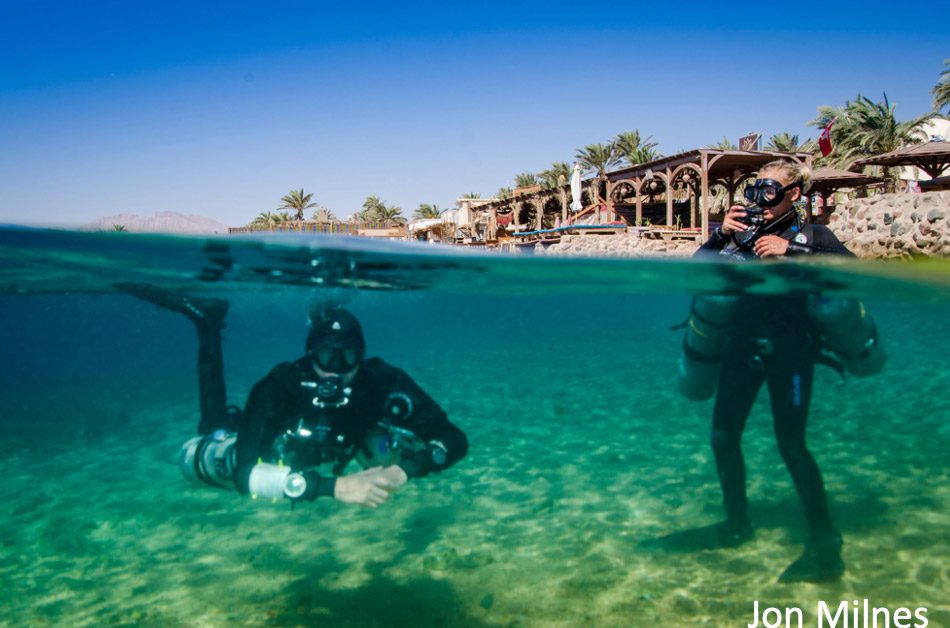
My Impressions
I decided the best way to assess the new courses was to dive in and work through the eLearning modules. It should be noted that PADI pioneered the use of eLearning in diving, back when digital meant floppy discs. Remember them?
I was impressed that the authors were able to seamlessly weave together old school tech philosophy and approach with the latest diving science with a focus on diver safety. Overall, it was some of the best tech course material I’ve read.
Tec 40 begins with a sobering warning.
To sum up the difference between recreational and technical diving risk in a single statement: “In technical diving, even if you do everything right, there is still a higher inherent potential for an accident leading to permanent injury and death. You have to accept this risk if you venture into technical diving. “
The warning is straight out of the original tech playbook pioneered by Capt. Billy Deans, before there were formal tech certification classes. Back in the late 1980s/early 1990s, interested divers traveled to Key West to spend a week, 10 days, two weeks—as much time as they could spare—to learn mixed gas diving from Capt. Billy. This was before formal tech certification courses existed.
By way of background, Deans’ best friend John Ormsby died on a deep air dive on the Andrea Doria in 1985. Deans was one of the divers that recovered the body and brought it back to the RV Wahoo. The incident motivated Deans, who worked with Dr. Bill Hamilton, to swear off “deep air diving” and develop his mixed gas diving operation and offer training.
On the opening day of his classes, Deans would welcome everyone. “We’re here to have a good time, “ he would say. “But before we do, I need to have your attention.” He would then play the film of him and others recovering his friend’s lifeless body and hoisting it onto the back deck of the Wahoo. “As I said, we’re here to have fun, but this is serious. You have to pay attention, and do everything right—there’s no room for complacency. If you don’t, you’re going to die.” Deans was admittedly harsh by today’s standards, but his admonition never failed to get divers’ attention.
It was encouraging to see attitudinal requirements and discussions as an integral part of the course. Attitude requirements were of course, part of original “Blueprint for Survival 2.0” community consensus of best tech diving practices that was published in aquaCORPS Journal #6 COMPUTING (June 1993), and meant to help improve tech diving safety.
To quote the Tec 40 text, “Your actions, words, and behavior must reflect that you will choose to follow the procedures, rules, and principles you learn in this course. This attitude is considered particularly important to diver safety in technical diving.”
In fact, Tec 40 offers six characteristics that denote a responsible technical diver, to wit; self-sufficiency, team player, disciplined, wary, physically fit, accepts responsibility. Sounds about right to me.
Finally, in the wrap up, the Tec 40 text reminds would-be tekkies (paraphrasing), “Your primary mission in tech diving is to survive the dive!”
Absolutely!
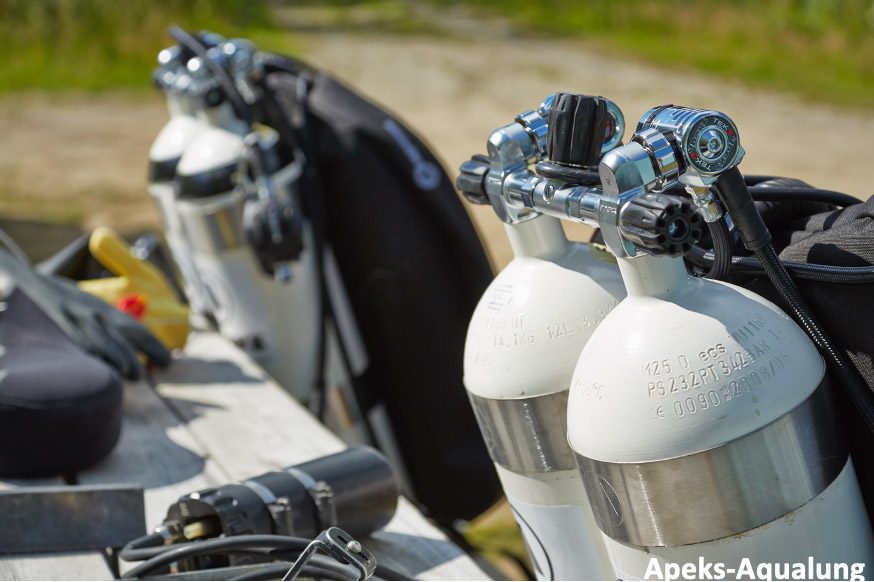
It’s The Science, Stupid
As mentioned above, the Tec course materials integrate the latest science and thinking from gradient factors and gas tolerance to IPE and offer depthful and nuanced discussion. The latest science, for example, has concluded that oxygen is non-narcotic in the PO2 relevant ranges for tech diving, however, the discussion points out that there’s nothing wrong with adding extra conservativeness and treating both O2 and N2 as narcotic gasses in calculating one’s END.
Similarly, the material teases out the nuances of the so-called “helium penalty,” a feature of some decompression algorithms that add extra deco time when using helium, whether or not it’s physiologically needed, and what that means for tech divers. They have also eliminated “deep stops,” which were included in the original Deep Diver course and offer an explanation why.
I was also impressed with the level of detail. For example, in discussing gear configuration, the text points out that tekkies don’t use hose protectors because they can mask hose damage. Similarly, in discussing the use of hyperbaric mixes, it details the risks of oxygen fires, the need for proper cleaning and lubrication, and even highlights the fact that regulators made with titanium might not be fully compatible with oxygen use (check with the manufacturer).
As mentioned, the mathematics and calculations sections focus on using dive computers and dive planning software to arrive at the answers rather than doing manual calculations. Hmm, it’s faster and more accurate. PADI calls it a “real world” consideration. Geeks like me can follow the link to the formula details and calculations, if that’s what they need to learn the material.
Drills & Skills
The Instructor Wetbooks outline the drills and skills to be worked during both dry and in-water sessions. I found them to be quite comprehensive and included the drills and skills you’d expect; dive planning, pre-dive checklist and equipment matching, S-drill, bubble check, controlled descent, propulsion drills, valve drills in trim, putting on and removing stage bottles, regular SPG checks, gas sharing, SMB deployment and ascent practice, proper gas switching, calculating SAC rates, etc.
As they work their way through the courses, students spend increasing time on problem-solving and responding to team emergencies such as free flows and leaky valves; various out of gas scenarios (bottom gas, deco gas); dealing with a dive buddy breathing the wrong gas at depth; buoyancy device failures; dive computer failures; and rescuing an unconscious diver. GUE Tech students will be very familiar with these kinds of drills.
Recommendations & Standards
I found the recommendations and standards presented in the courses robust and reassuring, and if offering a recommendation vs. making it a requirement is insufficient to satisfy a dyed-in-the-wool, old-school GUE instructor, it would likely at least get her to at least give a nod of support. One of the considerations for PADI, with its ginormous, global scale, is that courses must have sufficient flexibility to meet the needs of divers and instructors in different geographies. Here are some of the high points.
PADI recommends that tech divers maintain an END ≤30 m/100 ft and gas density less than 6.3 g/l (the air equivalent of 38 m/128 ft); however, it does not mandate the use of trimix for the Tec 40-50 courses. Given current prices and availability issues with helium, it is recommended but optional in these ranges, depending, of course, on conditions and the circumstances.
PADI focuses on team diving. They also recommend that the team utilize the same gas mixes while conducting a dive—hard to argue against for obvious reasons—although PADI does not offer specific standard gas mixes like GUE (nor do other agencies). However, they do rely on standard gas switching protocols, in PADI parlance, the NO TOX gas switch (Note your tank label, Observe your depth, Turn on the valve, Orient the regulator hose, eXamine your teammates).
Divers are encouraged to always use checklists. Gas reserves are calculated using traditional thirds or “Rock Bottom” gas, the equivalent to GUE’s “minimum gas” i.e., the amount of gas required to get two divers back to usable gas, whether deco bottles or the surface. Divers are also able to use computers in gauge mode and tables or dive computers.
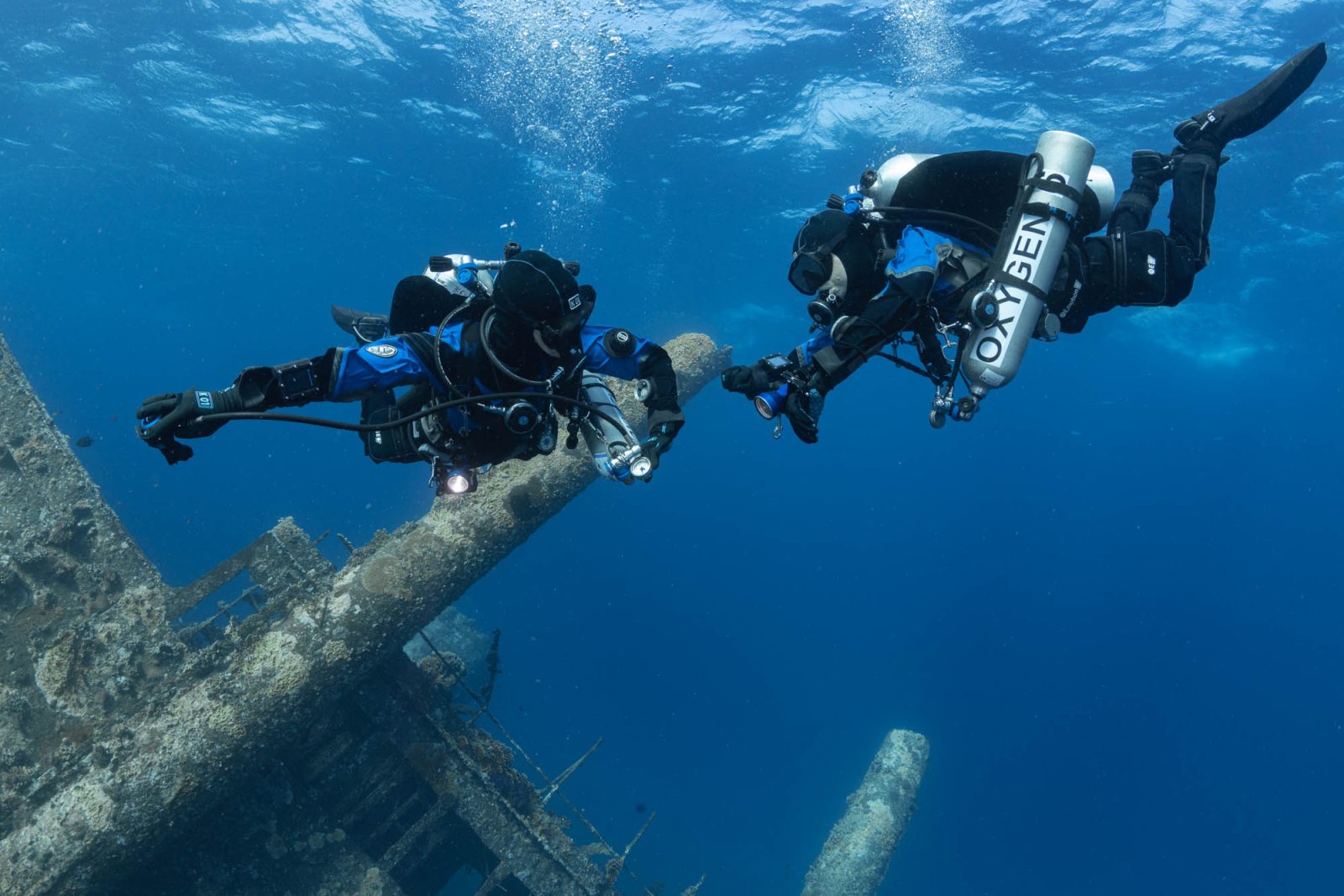
In Conclusion
Overall, I came away very impressed with the program and its focus on diver safety. But I wanted to get a perspective from someone who was familiar with PADI Tec as well as other agency programs. In this pursuit, I had the privilege of speaking with underground veteran Jim Wyatt, principal of Cave Dive Florida.
The ex-Navy diver is a former training director and instructor trainer for the National Speleological Society-Cave Diving Section (NSS-CDS) and a trimix instructor and cave instructor trainer for both IANTD and TDI. As far as his involvement with PADI, Wyatt is both a PADI course director and DSAT instructor trainer who has taught PADI Tec since 2002. Just the guy I wanted to talk with. “PADI Tec is a good program. They’ve made big changes and added trimix to their intro classes. I’d put their standards against anyone’s,” Wyatt, who’s hardly unbiased but likely knows the material as well or better than anyone outside the PADI organization, explained to me.
It is important to remember that all training agencies have standards; the critical question is, do their instructors follow them? After all, it is the instructors who are entrusted to provide training to students.
Without doubt, this is the work and challenge shared by all agencies, especially in the realm of technical diving. The challenge is even more complex for larger agencies like PADI and TDI, who have thousands of technical instructors. Managing and ensuring adherence to standards and quality instruction is undoubtedly a formiable task, even for smaller agencies like GUE, who have several hundred instructors.
Clearly, PADI bears the responsibility of ensuring that the quality of their Tec instructors and instruction matches the high quality of their standards and learning materials. I have no doubt that’s PADI’s goal and intent, and we wish them the utmost success in that endeavor.
Growing our cherished community with well-prepared, competent and capable technical divers, especially among the next generation who will eventually take the helm, is a shared responsibility, irregardless of the logo. With a shout out to GUE, we need to encourage and inspire each another, and our respective organizations, to strive for excellence in this regard! It’s all of “OUR” global community after all.
Special thanks to Asutay Akbayir, Eric Albinsson, Vikki Batten, Chris Brock, Samantha Pearson, Michael Richardson and Karl Shreeves for their help with my research for this story.
DIVE DEEPER
aquaCORPS archives: Put Another Diver In: John Cronin And The Business Of Marketing The Diving World (OCT 1995) I interviewed the late PADI CEO John Cronin in his office in 1995 just as the training juggernaut was rolling out its new Enriched Air Nitrox program. We talked about the founding of PADI, his vision of the diving business, the impact of tech diving on the market, PADI’s new enriched air nitrox courses, his thoughts on tech training and rebreathers, and where he believed the market was headed. Here is the original interview as seen in aquaCORPS. It ran as the cover story of aquaCORPS #12 Survivors OCT 1995.
InDEPTH: One Way The World Learns to Mermaid: The Mer-spective from PADI’s Karl Shreeves
Alert Diver.eu: Rapture of the Tech: Depth, Narcosis and Training Agencies

Michael Menduno/M2 is InDepth’s editor-in-chief and an award-winning journalist and technologist who has written about diving and diving technology for more than 30 years. He coined the term “technical diving.” His magazine “aquaCORPS: The Journal for Technical Diving” (1990-1996) helped usher tech diving into mainstream sports diving, and he produced the first tek.Conferences and Rebreather Forums 1.0 , 2.0 and 4.0. In addition to InDepth, Menduno serves as Senior Editor for DAN Europe’s Alert Diver magazine, a contributing editor for X-Ray mag, and writes for DeeperBlue.com. He is on the board of the Historical Diving Society (USA), and a member of the Rebreather Training Council.






















